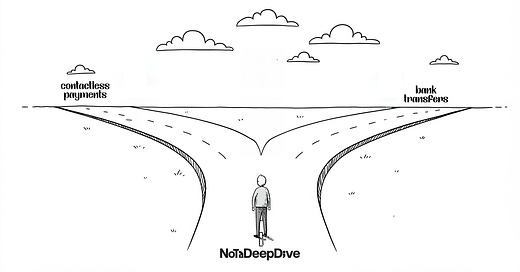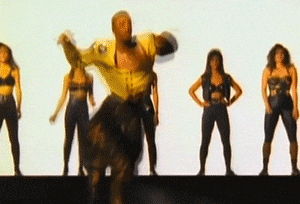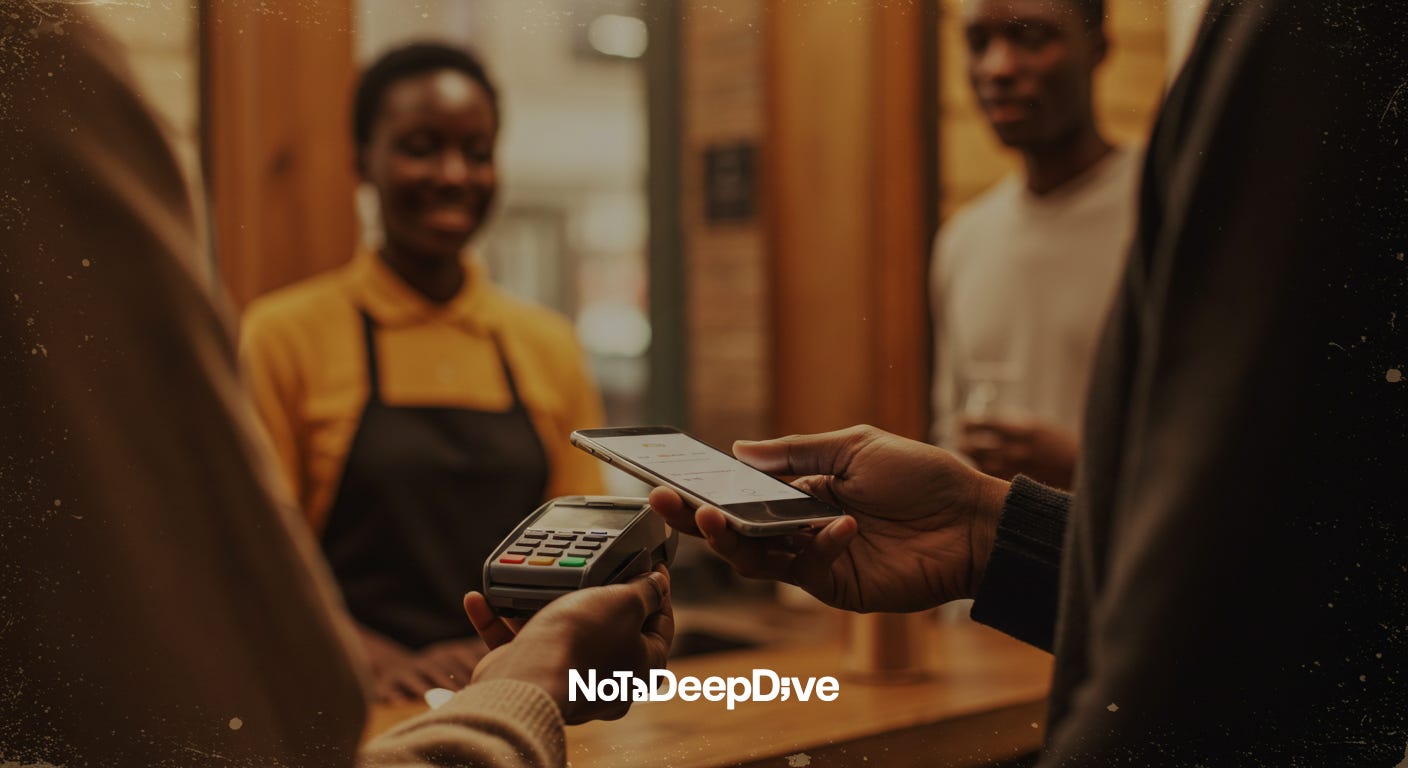“What fool thinks of defeat before even trying?”
How do we get to 5,000 subscribers, you ask? Share the newsletter on your social media channels, in group chats, and even with your enemies (you don’t want your opps to be informed?).
If you missed Friday’s newsletter, catch up here.
Can’t touch this
Every time you’re at a store/bar/restaurant/anywhere that requires money to change hands, the process is predictable.
The Debit Card Dance: Insert card, type PIN, and pray neither your bank nor the merchant’s bank is feeling mischievous. If all goes well, five minutes later, you’re free to leave. That’s three impatient people glaring at you in the supermarket queue.
The Bank Transfer Hustle: Increasingly popular. Open bank app, enter details, double-check that it’s the right account (or risk doing charity work), and if the fintech gods are smiling, you’re done in three minutes.
I’m ignoring the heathens who still use USSD
At face value, these payment methods work just fine. But people who understand how the financial sausage is made will tell you cards are expensive, and bank transfers are slow.
Think of it like 2G and 3G internet back in the day. We were happily downloading 500KB polyphonic ringtones, thinking we’d reached internet heaven. But the people designing the future knew better. They knew the game would change once speeds got way faster. Thanks to those geniuses, your MTN 5G subscription will last like five minutes.
Tap to pay is magic
The first time I saw someone use tap-to-pay was in 2024. It didn’t quite hit because I was just watching a friend casually wave their card. But in February 2025, I was in Nairobi, out of cash, and forced to figure things out.
I moved money to one of those “hold money in 100 currencies” apps (no free ads, ladies and gentlemen), created a virtual card, and added it to Google Pay. And just like that, my phone became my financial passport for a life of pomp and excess in East Africa.
Then, I tapped to pay for the first time.
The first time I “tapped” to pay
It’s difficult to explain the magic of it, but what kind of person will I be if I don’t even try?
No PIN required. None of that “Sir, please enter your PIN” business.
Just wave your phone or card near the POS terminal. Like sorcery, the money vanishes from your account.
Check-out lines move faster. A potential game-changer for Ebeano, at least until Amazon swoops in with cashierless stores.
It takes 15 seconds to complete a contactless payment, compared to the three to five minutes of traditional payments.
The only way to bottle the magic
While tapping to pay feels magical, the real magic is pairing offline contactless payments and that’s what Nigeria doesn’t have yet.
Right now, when you tap to pay in Nigeria, the transaction is processed online, which means it’s just as dependent on bank authorizations and network connectivity as inserting a card or making a transfer.
But contactless can also work offline. Here’s how:
Online Mode (What Nigeria Uses Today): Your tap sends the entire transaction to your bank for authorization. Your bank then gives an answer—yes or no.
Offline Mode (What Would Make Contactless Game-Changing): Your bank sets a spending limit (e.g., ₦40,000), and every tap under that limit is approved instantly by the card’s chip without needing to check with your bank.
This is how credit cards originally worked, and this is what would make contactless payments actually faster than cards and bank transfers.
The Catch? Nigerian banks don’t want to cover fraud losses.
In other markets, if your lost or stolen card is used for offline contactless payments, your bank covers the losses. In Nigeria, banks won’t take that risk because they believe the fraud exposure would run into billions of naira.
One potential workaround? Customers could set their own offline spending limits. Your bank would lock that amount in your account, and in case of unauthorized transactions, the money is simply reversed from your pre-approved fund.
The fork in the road
When you think about the future of digital payments in Nigeria, there’s a fork in the road.
Some fintechs believe bank transfers will become so fast that no one will bother with anything else.
Here’s Eduofon Japhet, the CEO of GTCO’s fintech subsidiary Squad:
“Transfers will always be the future of the continent, and we’re looking at different ways of making transfer payments feel more like card payments. A card payment, you know, is seamless and immediate. You can print it out, charge it back, and can refund it. We need to bring that other channel—transfers—which is easier to use in my estimation and make it more accessible for more people. We need to bring it to that level of sophistication where maybe we can use it to replace agents.”
A major Nigerian fintech will make an announcement tomorrow that shows that quite a few companies believe this route is the future.
The logic of this route makes sense, especially with NIBSS Direct Debit now being repurposed to make transfers faster.
Right now, direct debits are mostly used for loan repayments. But what if you could set money aside in advance for payments? Think of it like a prepaid tab; when it’s time to pay, the money just moves instantly.
That’s basically contactless but for transfers, and it’s a serious competitor.
The Contactless Takeover?
But what if transfers aren’t the final form of payments? What if the real future is skipping both transfers and card payments entirely in favor of a tap-and-go experience?
Some players, like Moniepoint, seem to be in the contactless payments camp. While competitors race to build the fastest transfer speeds, Moniepoint and others who already figured that out years ago seem to be adding contactless payments as an extra superpower.
But…
Merchants are hesitant. A bank executive told me that despite rolling out NFC-enabled POS terminals, many merchants called the bank to disable the feature after their first failed transaction. Nigerian merchants have zero patience for new things. If it doesn’t work the first time, they’re not interested.
QR codes flopped. Nigeria has been trying to push QR code payments for years, and the adoption rate is still depressing. (Side note: can we shoot the person who made QR code menus a thing in Lagos restaurants?)
Fraud is a concern. No PIN? Fraudsters are licking their lips. Until banks figure out a risk-sharing model, offline contactless won’t take off.
Cards are still relevant. Your Google Pay, Apple Pay, and tap-to-pay features are still linked to your debit or credit card. So even if contactless takes over, cards remain the foundation.
Super-fast transfers and contactless payments will coexist, but without offline contactless, bank transfers may still win out.
For now, Nigeria is stuck in a weird place where transfers are getting faster, but contactless isn’t quite there yet.
Tap to like today’s newsletter and to follow us on X.
See you nextFriday!









Small correction.
Debit card: 3 minutes
Bank transfer: 5 minutes and 6 angry people on the queue
Why didn't QR Codes take off for bank transfers though?